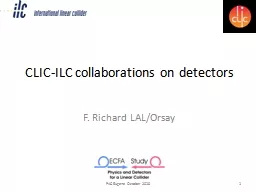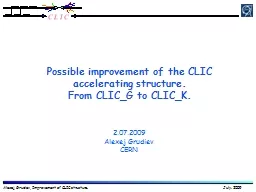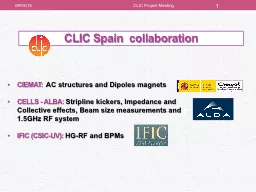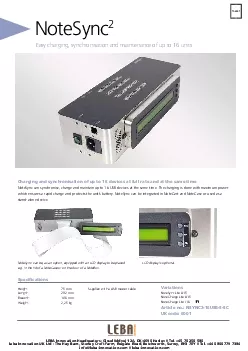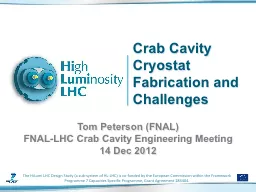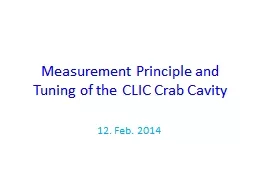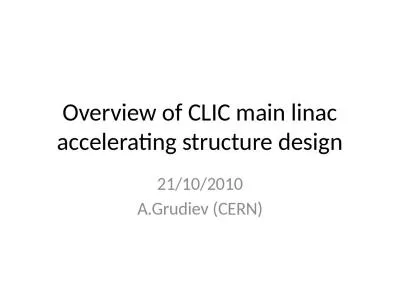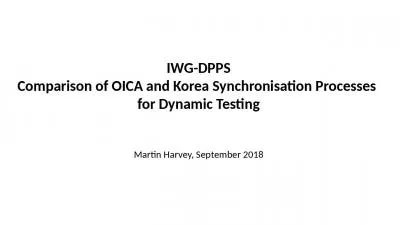PPT-CLIC Crab Synchronisation
Author : yoshiko-marsland | Published Date : 2018-01-09
Sam Smith and Amos Dexter Eucard2 WP12 Annual Meeting 14 th March 2017 CLIC requirement CLIC Crab cavity synchronization requirements background RF Distribution
Presentation Embed Code
Download Presentation
Download Presentation The PPT/PDF document "CLIC Crab Synchronisation" is the property of its rightful owner. Permission is granted to download and print the materials on this website for personal, non-commercial use only, and to display it on your personal computer provided you do not modify the materials and that you retain all copyright notices contained in the materials. By downloading content from our website, you accept the terms of this agreement.
CLIC Crab Synchronisation: Transcript
Download Rules Of Document
"CLIC Crab Synchronisation"The content belongs to its owner. You may download and print it for personal use, without modification, and keep all copyright notices. By downloading, you agree to these terms.
Related Documents



